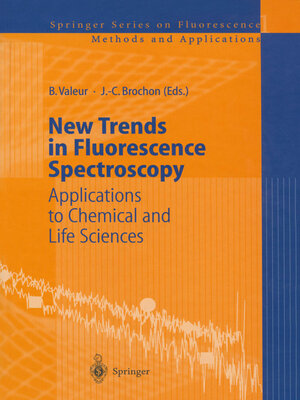New Trends in Fluorescence Spectroscopy
ebook ∣ Applications to Chemical and Life Sciences · Springer Series on Fluorescence
By Bernard Valeur

Sign up to save your library
With an OverDrive account, you can save your favorite libraries for at-a-glance information about availability. Find out more about OverDrive accounts.
Find this title in Libby, the library reading app by OverDrive.



Search for a digital library with this title
Title found at these libraries:
| Library Name | Distance |
|---|---|
| Loading... |
Fluorescence is more and more widely used as a tool of investigation, analysis, control and diagnosis in many fields relevant to physical, chemical, biological and medical sciences. New technologies con tinuously emerge thanks to the progress in the design of light sources (e.g. laser diodes), detectors (3D, 4D) and compact ultrafast elec tronic devices. In particular, much progress has been made in time resolved fluorescence microscopy (FUM: Fluorescence Lifetime Imaging Microscopy; FCS: Fluorescence Correlation Spectroscopy). Furthermore, the sensitivity now allows one to detect a single mole cule in the restricted field of a confocal microscope, which actually offers the possibility to study phenomena at a molecular level. The development of new fluorescent probes is still a necessity. In particular, the growing use of lasers implies high resistance to photo degradation. Fluorescence emission at long wavelengths is also a distinct advantage. Furthermore, in vivo inclusion of new fluorescent aromatic residues in proteins offer new potentialities in biology. of ions and molecules is Fluorescence-based selective detection still the object of special attention. Considerable effort is being made in the design of supramolecular systems in which the recognition event is converted into a fluorescence signal easily detected. New fluorescent sensors for clinical diagnosis and detection of pollutants in atmosphere and water are extensively developed. All these developments justify the regular publication of books giving the state-of-the-art of the methods and applications of fluo rescence spectroscopy.







